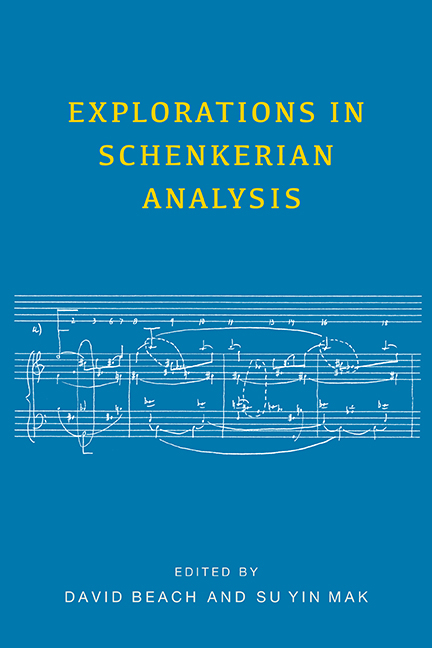Book contents
- Frontmatter
- Contents
- Preface
- Part One Eighteenth Century
- Part Two Early Nineteenth Century
- 6 Schubert's “Unfinished” Symphony: Analytical Observations
- 7 Structural and Form-Functional Ambiguities in the First Movement of Schubert's Octet in F Major, D. 803
- 8 The Form of Chopin's Prelude in B-flat Major, Op. 28, No. 21
- 9 “All That Is Solid Melts into Air”: Schumann's Overture to Manfred
- 10 Endings without Resolution: The Slow Movement and Finale of Schumann's Second Symphony
- Part Three Late Nineteenth Century
- Appendix: An Interview with Edward Laufer
- List of Contributors
- Index
10 - Endings without Resolution: The Slow Movement and Finale of Schumann's Second Symphony
from Part Two - Early Nineteenth Century
Published online by Cambridge University Press: 28 June 2018
- Frontmatter
- Contents
- Preface
- Part One Eighteenth Century
- Part Two Early Nineteenth Century
- 6 Schubert's “Unfinished” Symphony: Analytical Observations
- 7 Structural and Form-Functional Ambiguities in the First Movement of Schubert's Octet in F Major, D. 803
- 8 The Form of Chopin's Prelude in B-flat Major, Op. 28, No. 21
- 9 “All That Is Solid Melts into Air”: Schumann's Overture to Manfred
- 10 Endings without Resolution: The Slow Movement and Finale of Schumann's Second Symphony
- Part Three Late Nineteenth Century
- Appendix: An Interview with Edward Laufer
- List of Contributors
- Index
Summary
Introduction
In literary criticism, narrative trajectory is often understood as consisting of distinct phases, the last of which resolves the plot's tensions. This is clearly stated, for example, in Vladimir Propp's classical study Morphology of the Folktale. In every plot archetype that Propp describes, the concluding state resolves tensions that have been established earlier: “Morphologically, a tale (skázka) may be termed any development proceeding from villainy (A) or a lack (a), through intermediary functions to marriage (W*), or to other dénouement. Terminal functions are at times a reward (F), a gain or in general the liquidation of misfortune (K), an escape from pursuit (Rs), etc.” The plot's beginning thus proposes a problem, such as “a lack,” and its end provides a resolution to this problem, such as “a gain.” Likewise, discussions of musical narrative often suggest that a work's ending provides a resolution of its narrative tensions. This is evident, for example, in Byron Almén's recent theory on musical narrative. Building on the ideas of Northrop Frye and James Jakób Liszka, Almén suggests that the narrative archetypes in music grow out of a tension created by the elements in a binary opposition “order vs. transgression.” The poles of this opposition form an initial conflict, which suggests a distinction between two kinds of musical elements: those that attempt to establish order and those that try to lead to transgression. At the work's end the conflict is resolved; therefore, only those musical elements referring either to order or transgression remain.
This essay examines the slow movement of Robert Schumann's Second Symphony, arguing that this movement does not always follow a principle of providing clear resolutions. Rather, it leaves some of its tensions, both local and global, unresolved, thus often avoiding a sense of dénouement. My narrative reading pays special attention to the occurrences of the slow movement's main theme, its various transformations, and the formal and tonal environments in which it appears.
- Type
- Chapter
- Information
- Explorations in Schenkerian Analysis , pp. 177 - 198Publisher: Boydell & BrewerPrint publication year: 2016
- 1
- Cited by



